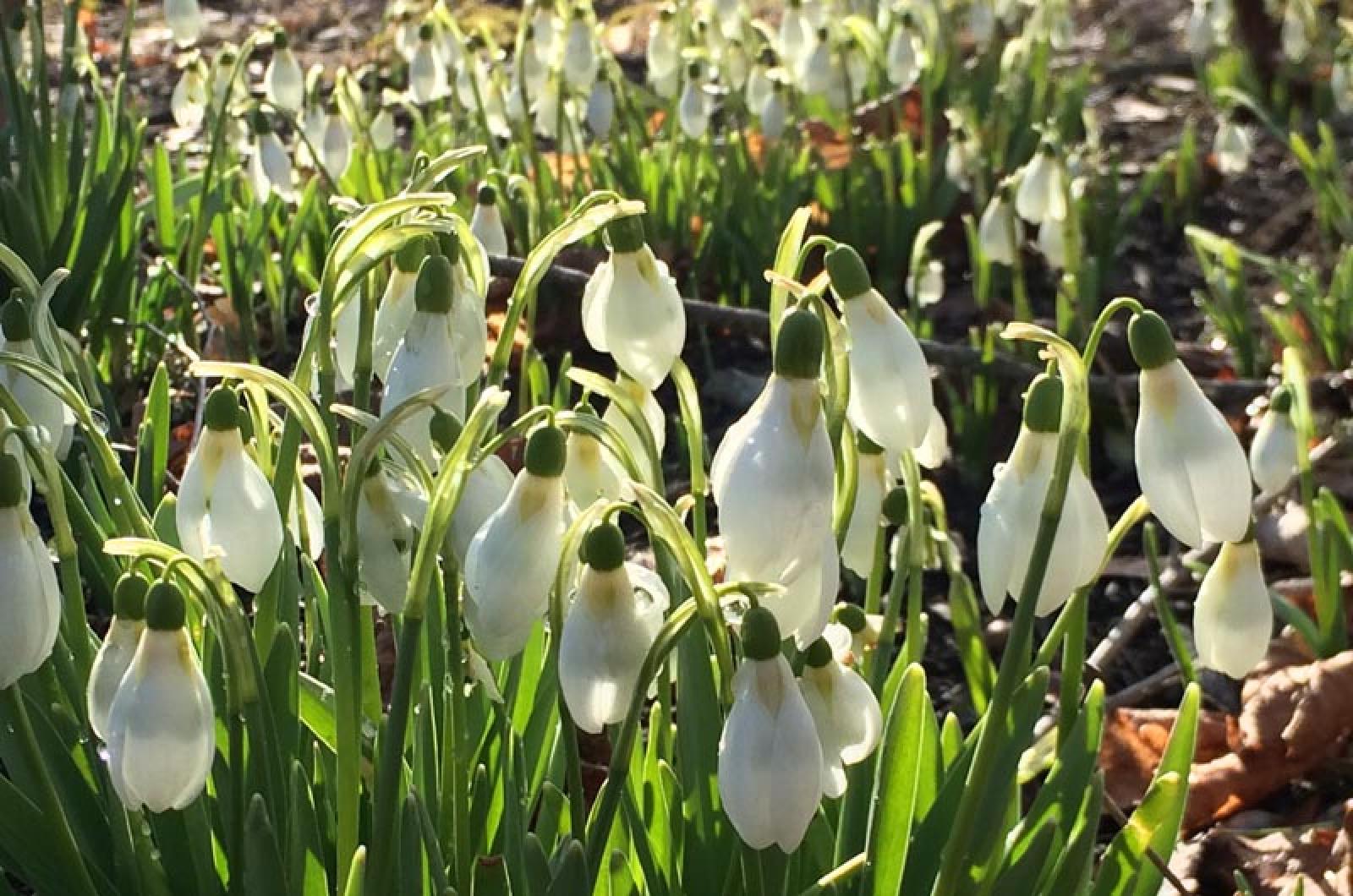All hail the Fair Maiden of February!
Okay, so it’s the beginning of April. I still couldn’t be happier to welcome the Fair Maiden of February, also known as snowdrops. This is definitely the only type of snow that I want to see just now.
Though usually appearing much earlier, the snowdrops have finally reared their beautiful white heads. Often these harbingers of the coming spring are observed in January or February (hence the nickname), but this year, their arrival was delayed either by the weather or simply because they were hidden by the snow cover that stubbornly refused to go away.
Powerful can describe them, both in terms of the emotions that they bring and their physical prowess. These small, mighty flowers are able to bust through frozen soil and snow by using a hardened leaf tip, which emerges first.
Their simple beauty also delights. A pure white flower with an unpretentious design hangs from a single stem. These white flowers are seen as a Christian symbol of Candlemas, the February Feast of the Purification of the Virgin Mary, and were often planted on church grounds and in cemeteries.
Their scientific name, Galanthus, is derived from the Greek root gala, which means milk, and anthos, meaning flower. Thus it is also called milk flower, owing to its petal’s resemblance to dripping milk. An alternate name, for no reason I can easily see, is bulbous violet.
Though not native to this country, they have easily become naturalized here. Needing very little maintenance once planted, snowdrops spread by themselves via bulb division. Though bees can pollinate them, bees are still dormant during the plant’s early flowering period, so they rarely visit them. And even more helpful for their survival is their lack of appeal to garden munchers such as deer, rabbits, chipmunks and mice.
Beyond their beauty, snowdrops may provide health benefits. Greek and Roman mythology suggest that snowdrops enhance dreams. Mercury, known as the bringer of dreams, gave Ulysses this flower for that purpose. And in Homer’s Odyssey, Mercury provides this herb to protect Ulysses from the “forgetful potions” of the witch Circe, making him immune to the amnesia she inflicted on others.
Modern medicine suggests other possible curative properties. Snowdrops contain the alkaloid galantamine, which has been used to manage Alzheimer’s disease in some countries and to treat traumatic injuries of the nervous system. It has also been studied as a treatment against HIV.
There are over 75 varieties of this plant that delight collectors and admirers, called galanthophiles. Poet William Wordsworth might be counted among those. He sang its praises thus:
Lone Flower, hemmed in with snows and white as they
But hardier far, once more I see thee bend
Thy forehead, as if fearful to offend,
Like an unbidden guest. Though day by day,
Storms, sallying from the mountain tops, waylay
The rising sun, and on the plains descend;
Yet art thou welcome, welcome as a friend
Whose zeal outruns his promise!
A hardy and welcome guest, full of promise, is a most factual as well as poetic way to describe the worthy snowdrop. Better late than never, a warm welcome to this fair maiden.
Suzan Bellincampi is director of the Felix Neck Wildlife Sanctuary in Edgartown, and author of Martha’s Vineyard: A Field Guide to Island Nature.




Comments
Comment policy »